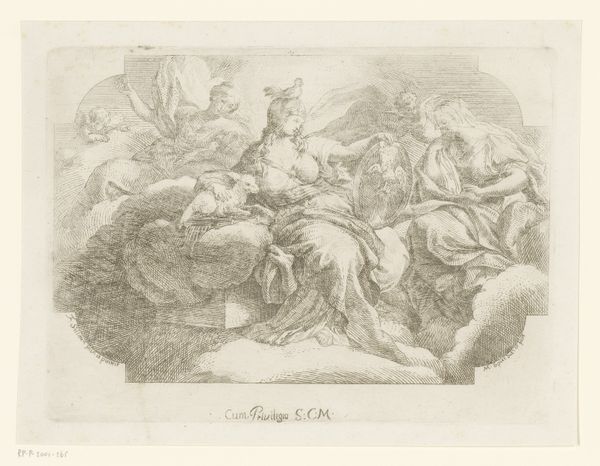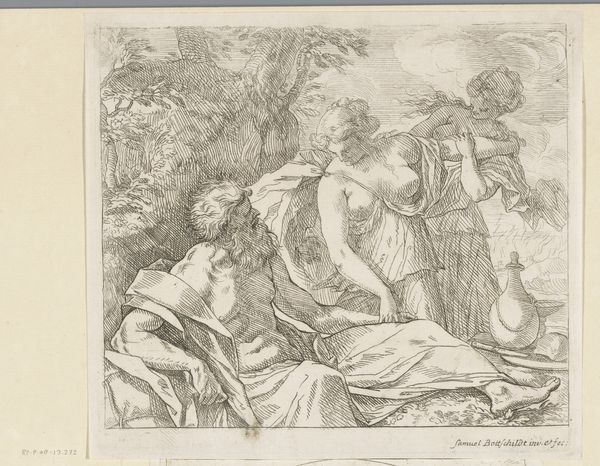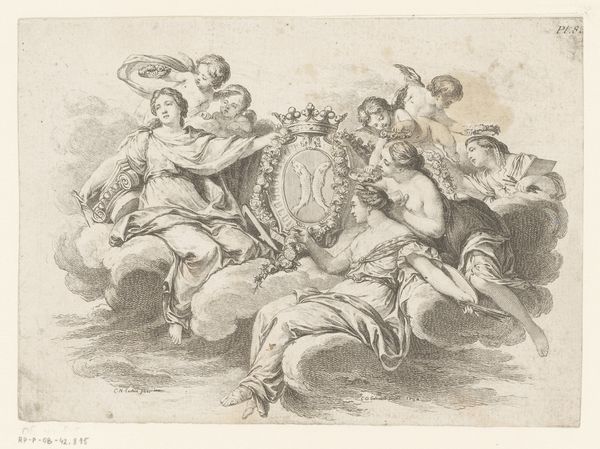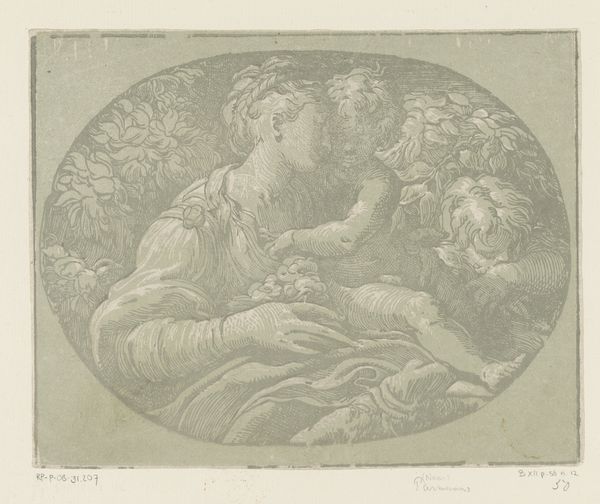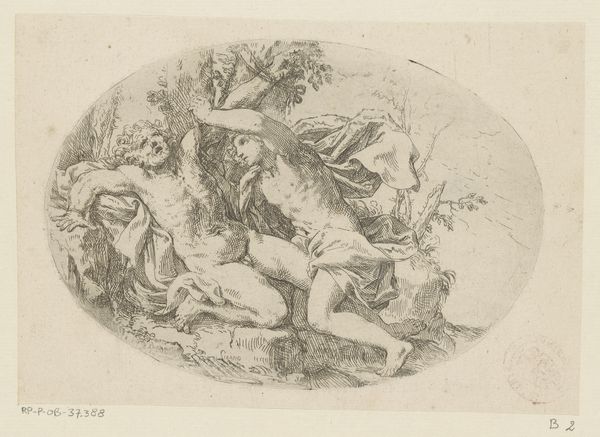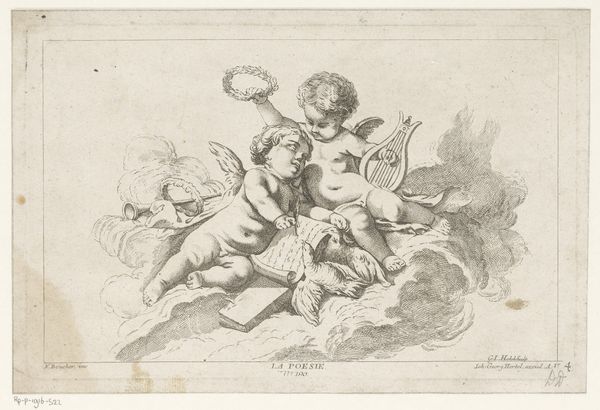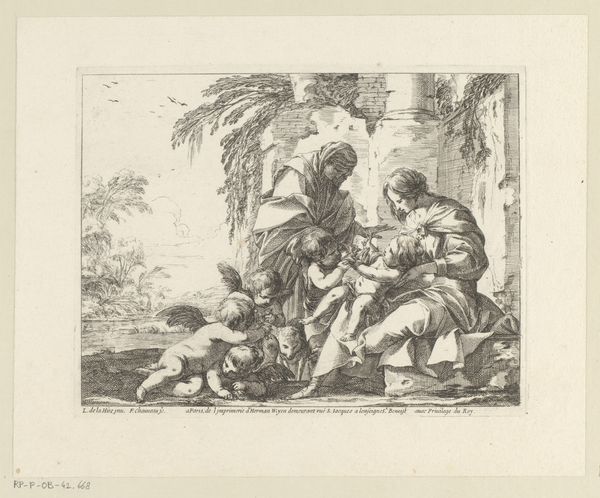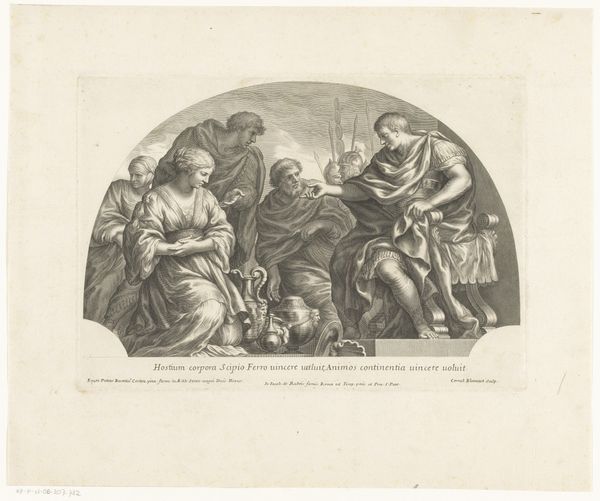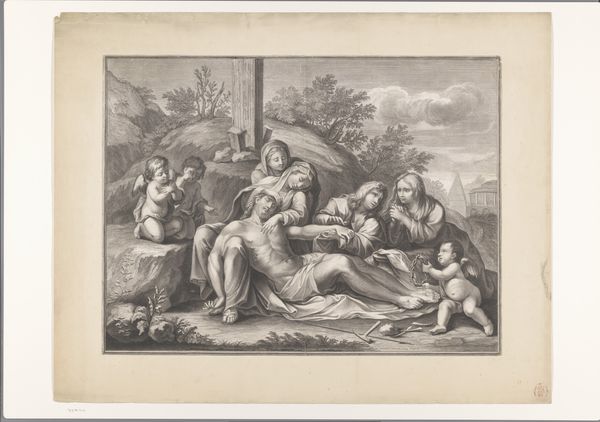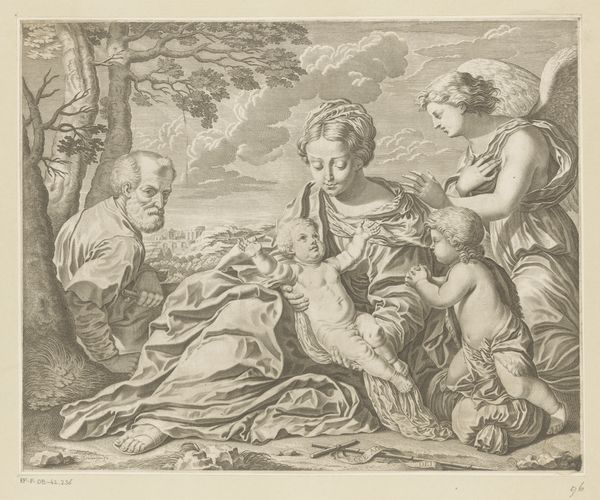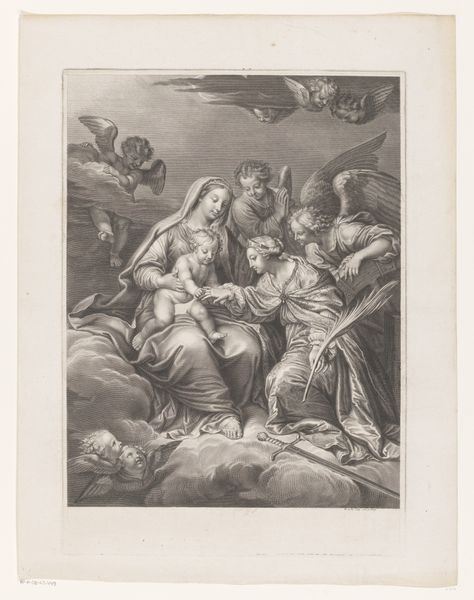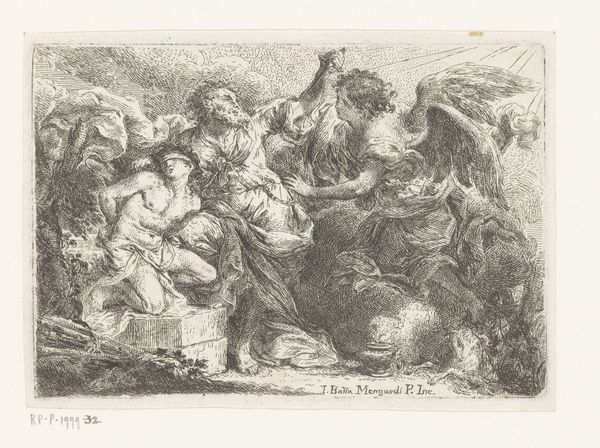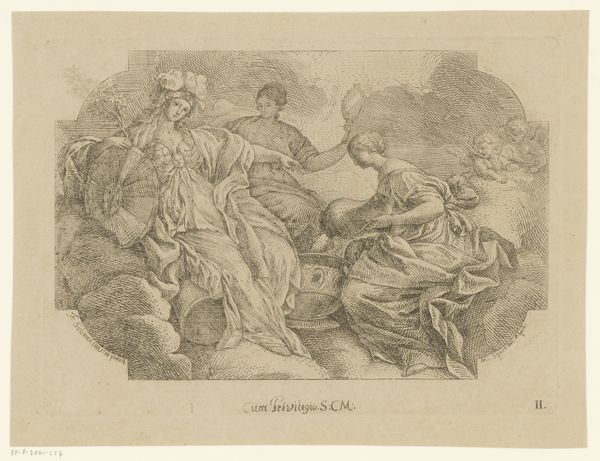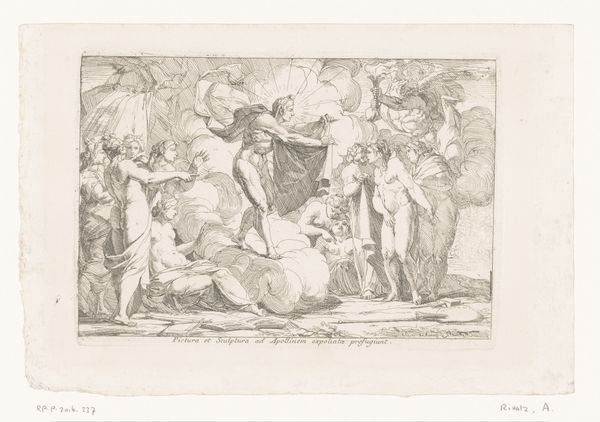
Dimensions: height 185 mm, width 252 mm
Copyright: Rijks Museum: Open Domain
Curator: Looking at "Vrouwelijke personificaties van drie goddelijke deugden," or "Female personifications of three divine virtues," a print made in 1817 and housed here at the Rijksmuseum, my immediate impression is its intricate delicacy. It is an engraving, so black lines create form. Overall the piece feels…weighty, though rendered with a very fine hand. What strikes you? Editor: Well, beyond the density of the linework, the arrangement of figures is particularly compelling. You have these allegorical women floating on what look like clouds. But there's a strange passivity about it all, despite its religious undertones, but this is Baroque! Curator: It's true that Baroque allegories used those symbolic figures very liberally, so a general educated audience would understand them at a glance. I mean look at that woman cradling the infant with an ample chest and plenty of exposed shoulders... obviously representing motherhood, yet elevated beyond real world practicalities! The details like the flowing fabrics contribute to that almost ethereal, divine impression of virtue. Editor: Yes, and isn’t that exactly the tension? What does it mean to see virtue depicted in these distant, unattainable figures, removed from the lives of everyday people. And look there on the right – her pose suggests divine guidance, or Justice—very literally out of reach. How do we reconcile these distant images with earthly challenges? Curator: Ah, but isn't the point of allegory precisely to lift the earthly toward the divine, to offer aspiration? The engraver, drawing from Baroque sensibilities, very much uses the imagery as a source of moral improvement in its viewers. How can one *act* virtuous? By holding oneself to an ideal, right? It is aspirational art made to move societies. Editor: I agree that ideals hold cultural force; it just remains a question of whose ideal. Does a piece like this engage meaningfully with what it actually takes for diverse people, particularly those excluded from these very tropes, to achieve some kind of material justice in a messy and unequal world? Curator: And that is a fair and crucial critique to keep in mind. Still, one can appreciate the print for what it meant to communicate at its specific time. Thanks to printmaking as a popular medium in this moment, many viewers would be able to understand and hopefully aspire towards such ideals. Editor: Indeed. Considering its historical weight within that era, along with its ability to spur dialogues around evolving meanings of justice today, the print continues to provide an incredibly thought-provoking and visually interesting experience.
Comments
No comments
Be the first to comment and join the conversation on the ultimate creative platform.
